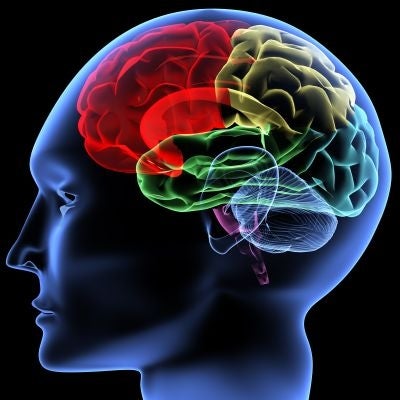Scientists settle centuries-old debate on perception

Your support helps us to tell the story
From reproductive rights to climate change to Big Tech, The Independent is on the ground when the story is developing. Whether it's investigating the financials of Elon Musk's pro-Trump PAC or producing our latest documentary, 'The A Word', which shines a light on the American women fighting for reproductive rights, we know how important it is to parse out the facts from the messaging.
At such a critical moment in US history, we need reporters on the ground. Your donation allows us to keep sending journalists to speak to both sides of the story.
The Independent is trusted by Americans across the entire political spectrum. And unlike many other quality news outlets, we choose not to lock Americans out of our reporting and analysis with paywalls. We believe quality journalism should be available to everyone, paid for by those who can afford it.
Your support makes all the difference.Researchers said Sunday they had solved a conundrum about human perception that has stumped philosophers and scientists alike since it was first articulated 323 years ago by an Irish politician in a letter to John Locke.
Imagine, William Molyneux wrote to the great British thinker, that a man blind from birth who has learned to identify objects - a sphere and a cube, for example - only through his sense of touch is suddenly able to see.
The puzzle, he continued, is "Whether he Could, by his Sight, and before he touch them, know which is the Globe and which the Cube?"
For philosophers of the time, answering "Molyneux's question," as it was known ever after, would resolve a fundamental uncertainty about the human mind.
Empiricists believed that we are born blank slates, and become the sum total of our accumulated experience.
So-called "nativists" countered that our minds are, from the outset, pre-stocked with ideas waiting to be activated by sight, sound and touch.
If a blind man who miraculously recovered his sight could instantly distinguish the cube from the globe it would mean the knowledge was somehow innate, they argued.
More recently, this "nurture vs. nature" debate has found its counterpart in modern neuroscience.
"The beauty of Molyneux's question is that it also relates to how representations are formed in the brain," said Pawan Sinha, a professor at MIT in Boston and the main architect of the study.
"Do the different modalities, or senses, build up a common representation, or are these independent representations that one cannot access even though the other modality has built it?" he asked in a phone interview.
Recent studies have suggested that the mental images we accumulate through sight and touch do, in fact, form a common pool of impressions that can be triggered and retrieved by one sense or the other.
But until now, no one has been able to design a definitive experiment.
The problem was finding subjects. They would have to have been blind at birth and then have had their sight restored, but not until they were old enough to reliably participate in tests.
Most forms of curable congenital blindness, however, are detected and cured in infancy, so such individuals are extremely rare.
More precisely, they are rare in rich countries. So in 2003, Sinha set up a program in India in cooperation with the Shroff Charity Eye Hospital in New Delhi.
Among the many patients he treated, he found five - four boys and one girl, aged eight to 17 - who met the criteria for surgery that would almost instantly take them from total blindness to fully seeing.
Once bandages were removed, researchers had to first be sure that the volunteers could see well.
Using objects that looked like Lego building blocks, they tested the ability to discriminate visually between similar shapes. The subjects scored nearly 100 percent.
They scored nearly as well when it came to telling the difference by touch alone, according to the study, published in Nature Neuroscience.
For the critical test, however, in which the children first felt an object and then tried to distinguish visually between that same object and a similar one, the results were barely better than if they had guessed.
"They couldn't form the connection," said Yuri Ostrovsky, also a researcher at MIT and a co-author of the study.
"The conclusion is that there does not seem to be any cross-modal" - that is, from one sense to the other - "representation available to perform the task," he said by phone.
The answer to Molyneux's question, then, appears to be "no": the data blind people gather tactically that allows them to identify a cup and a vase, and to tell them apart, is not accessible through vision.
At least not at first.
"From a neuro-scientific point of view, the most interesting finding is the rapidity with which this inability was compensated," said Richard Held, an emeritus professor at MIT and lead author of the study.
"Within about a week, it's done - and that is very fast. We were surprised," he said by phone.
The overall results suggest that the human brain is more "plastic," or malleable, longer into childhood that previously thought, the researchers said.
"This challenges the dogma of 'critical periods,' the idea that if a child has been deprived of vision for the first three or four years of life, he or she will be unable to acquire any visual proficiency," Sinha said.
mh/gd
Join our commenting forum
Join thought-provoking conversations, follow other Independent readers and see their replies
Comments